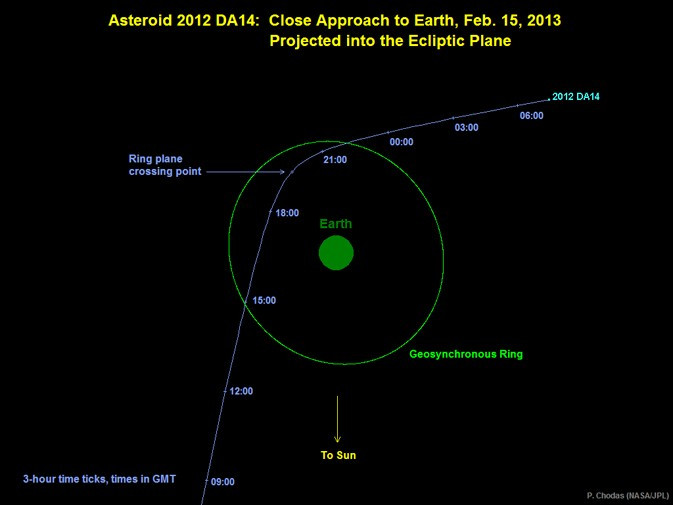Close Encounters with an Asteroid: Near Earth Object Approach Will be Closest Ever
An asteroid similar in size to 2012 DA14 hit Siberia in 1908, destroying more than 2,000 sq km of forest
An asteroid, 150ft (45.72m) wide, capable of destroying London on impact will fly safely past Earth tonight, according to NASA. The asteroid (2012 DA14) will pass within 27,358km of our planet, at a speed of 25593.333km/h. The asteroid will be closest to Earth at 7.25pm GMT on 15 February.
The speed, size and proximity of the asteroid raises the question of Near Earth Objects (NEOs) colliding with our planet and creating catastrophic and apocalyptic scenarios that are so popular in science-fiction stories.
However, scientists have repeatedly stated there is no immediate risk of a NEO collision. They do, however, admit such objects could bump into one of many telecommunications satellites in orbit around Earth.

NASA's statement reads: "This [the asteroid's] distance is well away from earth and the swarm of low Earth-orbiting satellites, including the International Space Station, but it is inside the belt of satellites in geostationary orbits (about 22,000 miles above earth's surface). The flyby of 2012 DA14 is the closest-ever predicted approach to earth for an object this large."
At the time of closest approach, 2012 DA14 will cross over the eastern Indian Ocean, off the Indonesian island of Sumatra. That obviously makes Indonesia the best place to spot the asteroid; the pass occurs in broad daylight for much of the western world, making it difficult to see the object. You will still need at least an amateur telescope though. Other places for optimal viewing of the asteroid will include Eastern Europe, Asia and Australia.
And with an estimated mass of 130,000 metric tonnes, the asteroid will be present in the Earth/Moon system for about 33 hours.
Incidentally, the next closest approach to earth by 2012 DA14 will be exactly 33 years from now - on 15 February, 2046. NASA adds that the measure of proximity in that instance will be a very comfortable 1,000,000km from the centre point of the planet.
2012 DA14 was first spotted last year by the La Sagra Sky Survey, operated by the Astronomical Observatory of Mallorca, in Spain. The asteroid was about 4,345,228km away from the planet at the time of spotting.
It should be noted, though, that an asteroid of this size can cause regional devastation. NASA reports that an impact of this size will release 2.5 megatons of energy. And an example of that kind of collision occurred in Siberia in 1908. The collision, referred to as the Tunguska Event, saw an asteroid slightly smaller than 2012 DA14 flatten a little over 2,000 sq km of forest.

© Copyright IBTimes 2025. All rights reserved.





















